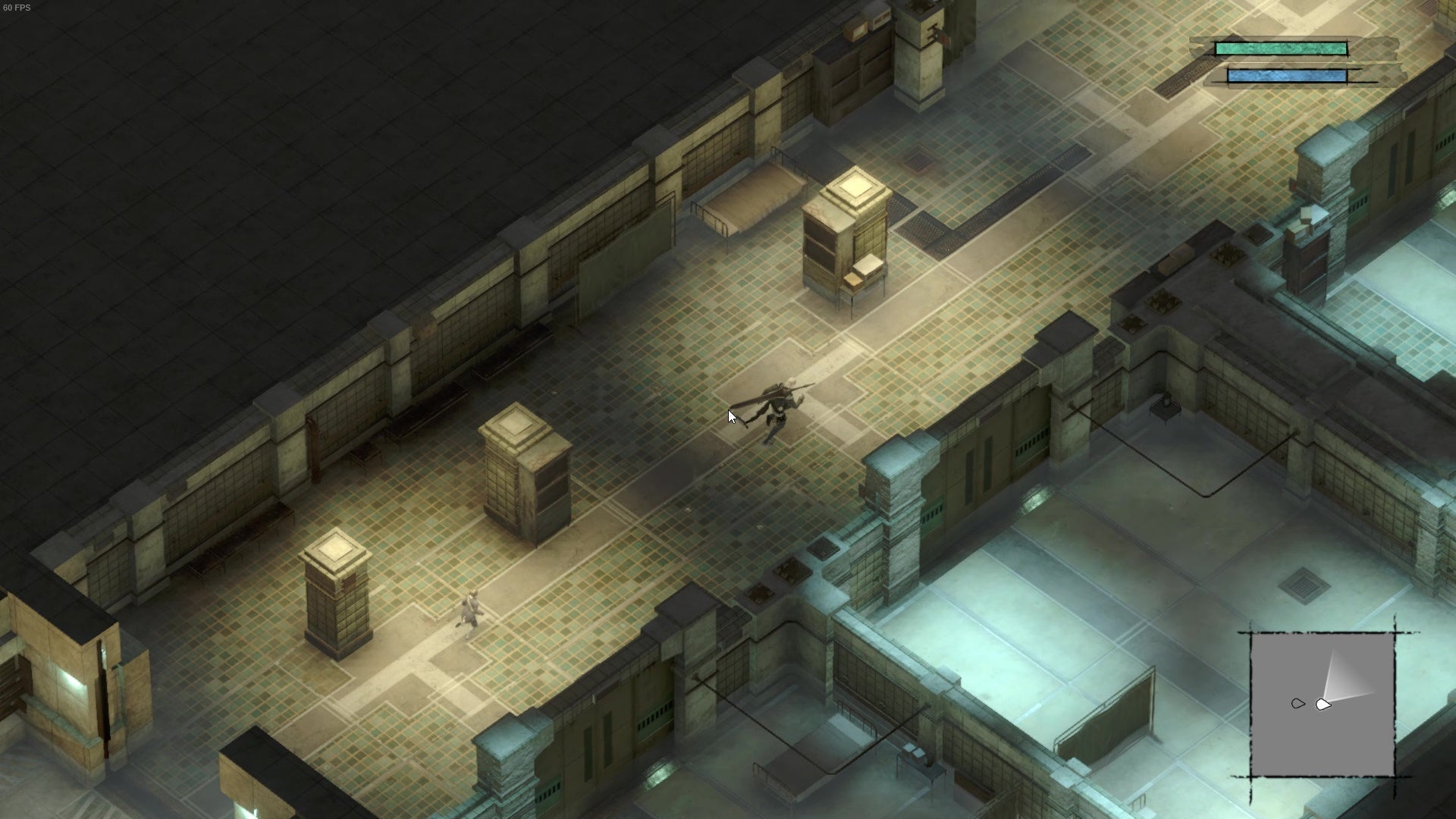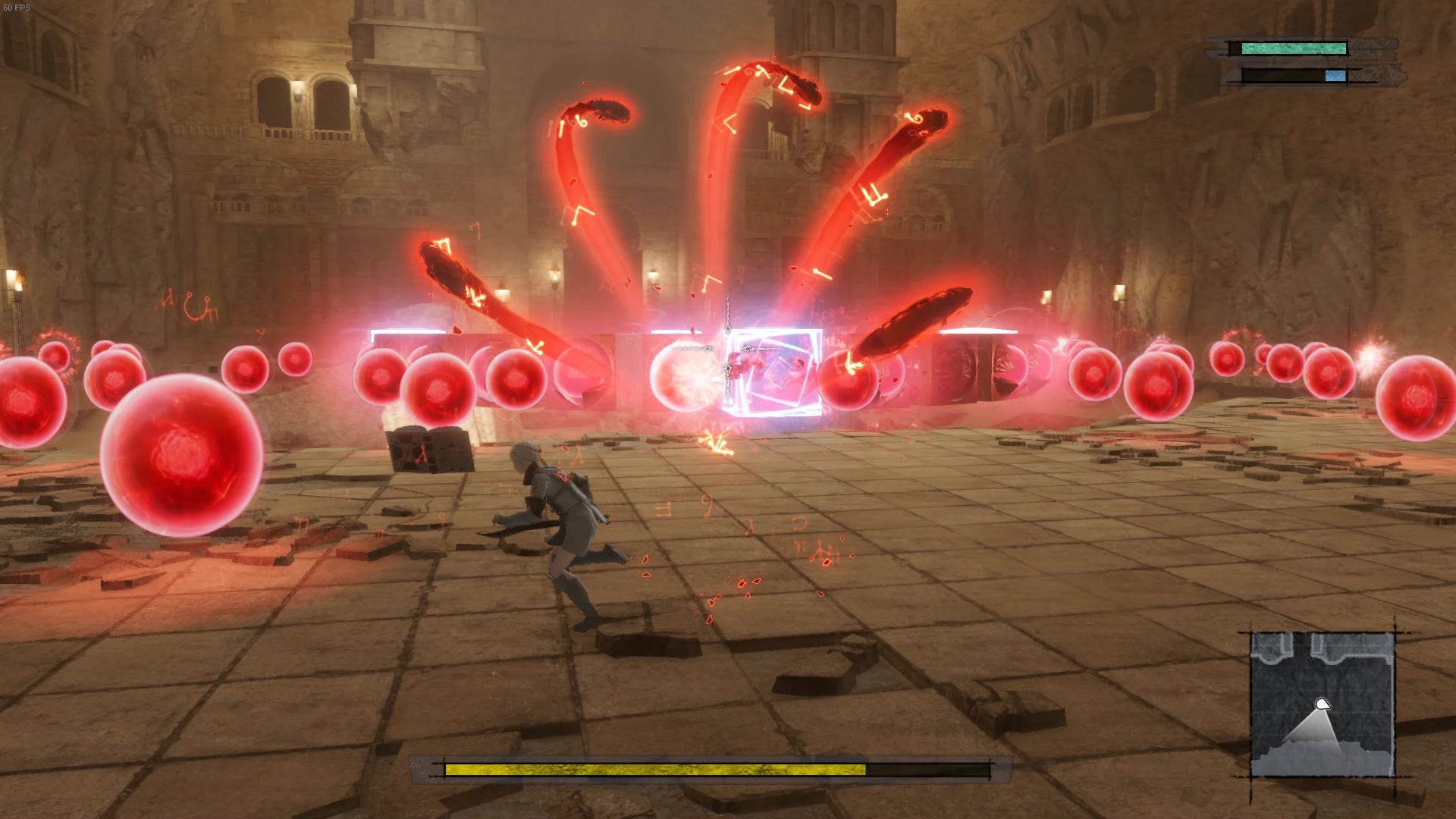I played NieR Replicant five times over. I had no choice. Not because I needed to for review, but because I’d miss out on the story if I didn’t: the tale of a young man who, joined by a talking book called Grimoire Weiss, sets out on a journey to save his sister Yonah from a mysterious illness. A simple premise that - in typical NieR fashion - spiralled into a complex, emotional rollercoaster. It was this that compelled me to trudge through each successive playthrough, nothing else. And that says a lot, I think. On its first playthrough, NieR Replicant is wildly unpredictable. It presents you with this strange, absurd world with books that talk and a boar you can drift on, and ghostly creatures to fight. It transitions seamlessly from a hack-and-slasher, to a bullet-hell, to a Resident Evil-style exploration game with ever-changing camera angles. But intermingled with the oddness is the very touching story bourne by your companions, and it’s that that ultimately shines the brightest. There’s Emil, a curious boy you find locked inside a haunted mansion, who will be familiar to Automata fans; Kaine, a tough-talking fighter clad in lingerie (?!); and Grimoire Weiss, the aformentioned magical, upstanding book. They all generate good banter and gutwrenching backstories, but Weiss stands out the most. Not only does he grant you magical powers to sling at opponents, he’s also just very funny, and this comes in handy as you play. In NieR Replicant you explore a sandbox stitched together by loading screens and large open spaces. You bounce between NPCs, fight monsters, collect resources, and partake in exhilarating boss fights in your quest to save Yonah. Everything is exciting and unfamiliar in the first playthrough, right up until the end credits. Most of the time you’ll fight “shades”, these wiry creatures that come in many different forms, from little scamps that’ll scratch at your ankles, to balls that’ll spew more balls at you. Sometimes they’ll take on a colossal form, and these boss fights are ace. I particularly enjoyed an early one where you face off against this honking great lizard with horrid pustules that swung underneath its neck. It was a multi-stage affair which had me whacking its hands, then doing a bit of 2D-esque platforming, and rounding things off with a traditional dodge-oncoming-walls-of-more-balls. Then you go again - playthrough two. NieR Replicant sheds a layer unpredictability, as this time you know exactly where to go and what to do, but in exchange it surprises with extra cutscenes or snippets of dialogue which proved revelatory. Suddenly, my eyes were opened, and I approached each encounter from a different angle. Even if what I did remained exactly the same, playthrough two puts a different sheen on it; a darker, greyer one. Playthroughs three and four is where I felt like a toddler trapped in a temper tantrum: “I don’t wanna, I don’t WANNA”, I screamed internally, as I skipped every cutscene and bit of dialogue. You have a different goal for playthrough three, and can largely skip playthrough four by reloading a save, but the repetition still feels torturous. Barely anything changes apart from the endings - which, granted, were excellent story moments, but I still felt like I’d had a fair amount of my time wasted. I understand that a large part of NieR Replicant’s successive playthroughs promote mastery, but I felt like this mandatory time sink trivialised events. For all that, by the fourth playthrough, I felt like an accomplished speedrunner who could recite what NPCs were going to say before they opened their mouths, my ability to fell bosses in minutes and skip almost every dialogue option diminished how meaningful they once were to me. That’s not to say NieR Replicant’s other components aren’t up to par. The combat is flashy and weighty, with a wonderful fluidity as you slice your oppontents and dive between them. It does get a bit button-mashy, but nothing a quick weapon-swap doesn’t fix - although I would say that by the fourth playthrough it, like many other things, will lose its luster, and become very much a means to an end. The same goes for the side quests. First time around, they’re simple fetch quests that morph into fun, interesting mini-stories. I particularly enjoyed one which involved a bickering couple and an apple. Sometimes, though, it’s hard to decipher which are of importance for the game. There’s one which grants you access to a garden where you can harvest vegetables, and one that lets you ride boar to close gaps much faster than being on-foot. Both of these I’d class as essential to help you progress, yet there’s no knowing nudge from the game to tip you off to this. NieR Replicant’s vast, barren world never gets old, though. It’s proof that not everything needs meticulous detail to leave an impression. One location, a Greek-inspired seaside town, is stunning. I remember standing next to this weathered fisherman who looked out at the sea, and at the rusted skeletons of a bygone era which towered out of the blue expanse, all twisted and sunken. “Hot damn,” I thought. “Only in NieR.” But none of this is any good if you can’t run NieR Replicant well on PC is it? On my system, playing at 1080p with an RTX 2070, I experienced no frame rate issues at a locked 60 fps and at the highest graphics settings. From start to finish, I experienced barely any frame drops during intense moments. Perhaps the odd dip into 55 fps, but it was very rare. I was, however, disappointed to discover that there was no way to unlock the game’s fps through the in-game settings. You’re stuck with 60 fps, whether you like it or not, which is a real shame if you’ve got a rig that’s capable of churning out a lot more. I’ve also seen some reports of users being locked to frame rates of 30 or lower, and other players who’ve managed to unlock the frame rate seeing the game’s animations speed up with it. I found the keyboard and mouse controls perfectly fine, and nicely customisable too. My mouse cursor also had a habit of popping up randomly in the middle of cutscenes, even when playing with a controller. I opted to play with an Xbox One controller - button prompts for PS4 controllers weren’t a thing - and the only issue I encountered were huge frame rate drops when plugging in or unplugging my controller. It would chug for around ten seconds before everything caught up. This NieR Replicant port also contains a new story episode. Of course, I won’t get into specifics, but it’s about a little girl and a shipwreck. I thought it was brilliant, and perhaps one of the only bits that holds up through each successive playthrough. There’s also an unlockable dungeon-crawling mini-game which was alright, I suppose. Great for farming resources, and for new costumes, but it was largely forgettable. The music, though. Sheesh. And that goes for all the tunes in NieR Replicant. Each time you enter a new area it just bathes you in glorious piano plinks and harmonious “Aahhhs”, all immediately hummable and simply delightful. After sifting NieR Replicant for golden nuggets of story for nearly 30 hours, the fifth and final playthrough is the big payoff. A glimmering chunk that’s worth all that pain. The game becomes unpredictable again, as if you only had a second of time to celebrate your find before crashing through a sinkole into a throng of earth and cables. It was brief, but stirring stuff. That is, if you’re into NieR’s story. If you’re not, then I highly doubt you’ll have the patience to complete this game five times. There is no other way to describe it other than a big commitment. Almost all aspects of this game wore thin over time, until at one point the only thing that kept me going was sheer force of will. I’m very glad I hung on in there, but I do wonder how many people will bother.



